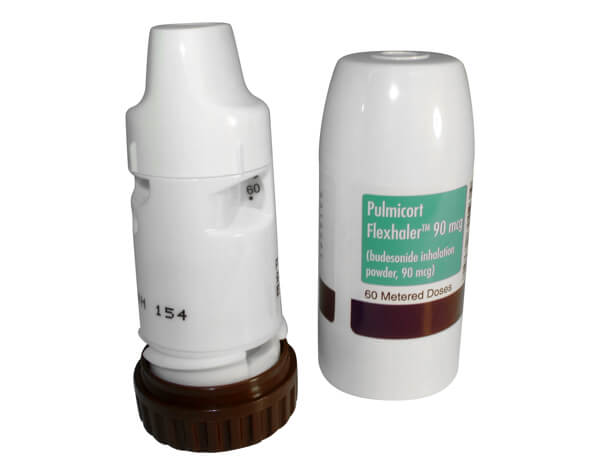Comprehensive Guide to Pulmicort Flexhaler: Dosage, Benefits, and Usage
Pulmicort Flexhaler stands as a cornerstone in the management of asthma—a chronic respiratory condition affecting millions worldwide. In this comprehensive guide, we delve into the specifics of Pulmicort Flexhaler, shedding light on its benefits, proper usage, and its role in providing relief to those living with asthma. By understanding its mechanism and following proper inhalation techniques, individuals can take proactive steps toward controlling their asthma symptoms effectively.
Understanding Asthma and Its Management:
Asthma, a chronic respiratory disorder, narrows and inflames the airways, leading to breathlessness, wheezing, and coughing. Effective asthma management is essential to prevent exacerbations and enhance quality of life. While asthma has no cure, medications like Pulmicort Flexhaler play a pivotal role in controlling symptoms and reducing airway inflammation, allowing individuals to breathe easier and lead active lives.

Pulmicort Flexhaler: A Breakdown:
At the core of effective asthma control lies Pulmicort Flexhaler, housing the active ingredient budesonide—a corticosteroid that targets airway inflammation. By minimizing inflammation, Pulmicort Flexhaler helps open up the airways and eases breathing difficulties. Unlike rescue inhalers, Pulmicort Flexhaler is designed for long-term asthma management, making it an invaluable asset in maintaining symptom-free days and preventing flare-ups.
Benefits of Using Pulmicort Flexhaler:
Pulmicort Flexhaler offers a range of benefits that contribute to effective asthma management. By directly targeting airway inflammation, it helps reduce the frequency and severity of asthma symptoms. The controlled release of budesonide provides sustained relief, making it suitable for both daily use and long-term symptom prevention. Moreover, the Flexhaler design ensures consistent dosing accuracy, enhancing treatment reliability for individuals seeking improved asthma control.
Proper Usage and Dosage:
Achieving optimal results with Pulmicort Flexhaler hinges on proper usage. Follow these steps for effective inhalation:
Exhale fully before placing the mouthpiece in your mouth.
Inhale deeply as you press down on the inhaler, releasing a dose of budesonide.
Hold your breath for a few seconds to allow the medication to reach your airways.
Exhale slowly and repeat if multiple doses are prescribed.
Who Can Benefit from Pulmicort Flexhaler:
Pulmicort Flexhaler is suitable for individuals with persistent asthma symptoms—those who experience frequent episodes or symptoms that disrupt daily activities. It’s particularly valuable for those who require daily asthma control and long-term symptom prevention. Before starting Pulmicort Flexhaler, healthcare professionals evaluate individual needs to ensure that the treatment aligns with the patient’s asthma management plan.
Potential Side Effects and Precautions:
While Pulmicort Flexhaler is effective in managing asthma symptoms, it’s essential to be aware of potential side effects. Common side effects may include throat irritation, coughing, and fungal infections in the mouth. To minimize the risk of these effects, it’s recommended to rinse the mouth after each use. It’s crucial to discuss any concerns with your healthcare provider, who can provide guidance on managing side effects and adjusting your treatment plan if necessary.
Comparing Pulmicort Flexhaler with Other Inhaler Types:
Pulmicort Flexhaler stands out as a dry powder inhaler, offering distinct advantages over other inhaler types. Its breath-activated design eliminates the need for coordination between inhalation and medication release. Compared to traditional metered-dose inhalers, the Flexhaler’s simplicity enhances ease of use and accurate dosing. Additionally, the dry powder formulation reduces the risk of propellant-related side effects, offering a user-friendly experience for those seeking precise asthma control.
Using Pulmicort Flexhaler in Children:
Pediatric asthma management requires special consideration, and Pulmicort Flexhaler plays a vital role in young patients’ well-being. Children with persistent asthma symptoms can benefit from the controlled release of budesonide, which helps prevent symptoms and asthma attacks. However, proper supervision is crucial to ensure correct inhalation technique and dosage administration. Pediatricians tailor the treatment plan based on a child’s unique needs, ensuring optimal asthma control while minimizing potential side effects.
FAQs About Pulmicort Flexhaler
What is Pulmicort Flexhaler used for?
Pulmicort Flexhaler is used to manage asthma by reducing airway inflammation, preventing symptoms, and enhancing breathing.
How does Pulmicort Flexhaler work?
Pulmicort Flexhaler contains budesonide, a corticosteroid that reduces inflammation in the airways, helping to alleviate asthma symptoms.
Is Pulmicort Flexhaler suitable for all age groups?
Yes, Pulmicort Flexhaler is suitable for both adults and children with persistent asthma symptoms. Pediatric dosages are adjusted based on age and weight.
How often should I use Pulmicort Flexhaler?
The dosing frequency of Pulmicort Flexhaler depends on your healthcare provider’s recommendation. Generally, it’s used once or twice daily.
Can I use Pulmicort Flexhaler as a rescue inhaler during an asthma attack?
No, Pulmicort Flexhaler is not a rescue inhaler. It’s designed for long-term asthma control and prevention, not for immediate relief during attacks.
Are there any side effects of using Pulmicort Flexhaler?
Common side effects may include throat irritation, coughing, and mouth fungal infections. Rinsing your mouth after use can help minimize these effects.
How soon can I expect to see results with Pulmicort Flexhaler?
It may take a few days to weeks for Pulmicort Flexhaler to provide noticeable improvements in asthma symptoms. Consistency is key for optimal results.
Can I use Pulmicort Flexhaler if I’m pregnant or breastfeeding?
It’s essential to consult your healthcare provider before using Pulmicort Flexhaler if you’re pregnant or breastfeeding, as they can assess potential risks.
Can Pulmicort Flexhaler interact with other medications I’m taking?
Inform your healthcare provider about all medications you’re taking, as some drugs may interact with Pulmicort Flexhaler. This helps ensure safe usage.
How do I store Pulmicort Flexhaler?
Store Pulmicort Flexhaler at room temperature away from moisture and heat. Follow the storage instructions provided with the product.
Conclusion:
In the journey of asthma management, Pulmicort Flexhaler emerges as a valuable ally. By addressing airway inflammation and providing sustained relief, it offers individuals the opportunity to regain control over their lives. With its breath-activated design, accurate dosing, and suitability for various age groups, Pulmicort Flexhaler exemplifies innovation in asthma care. Remember, successful asthma management extends beyond medication—it involves collaboration with healthcare providers, proper inhalation techniques, and ongoing monitoring to ensure the best possible outcomes.




